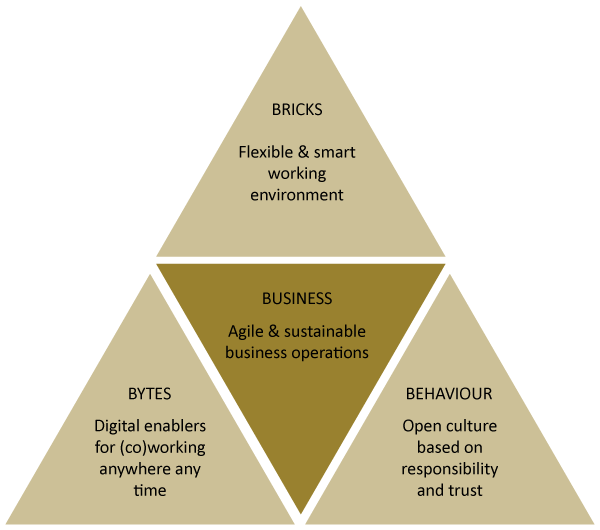How long does a trend need to stay in place before we say it’s no longer a trend but an evolution? There’s no need to wonder about this in the case of the New Way of Working. It has become the new normal. But is it possible in every organisation?
The New Way of Working gives workers the chance to arrange their work with anything from a great degree of freedom up to complete independence. The strict 9-to-5 regime—the one that left your employees stuck in traffic twice a day—is over and done with. So now what’s happening with your employees? Are they sitting down at the breakfast table to work every morning? Great! As long as they’re at the office in time for that midday meeting.
The New Way of Working has its advantages …
Working times and places are no longer set in stone. This has proven benefits: the added flexibility allows your employees to better guard their work-life balance. As a result, they’re more productive, more committed and more loyal to your company. Plus, with a flexible weekly schedule, your employer brand radiates positivity, attracting even more talent. At least that’s how it works in theory.
… and it has its challenges
In practice, it’s more nuanced. Because the transition to the New Way of Working will not happen on its own. It brings a whole cultural change with it. How do you evaluate employees who you no longer see at work every day? And what do the labour laws say about office workers being able to work at home snuggled on the sofa? Won’t that be bad for their backs? Who’s responsible for a back injury?
Win-win
The New Way of Working is about more than flexible hours and working from home. It is a way of giving your employees more autonomy. It challenges you to think about exactly what your company is doing. You have to look for a new definition of productivity because you can no longer look over their shoulders. What output do you expect from them? How, where and when are they best delivering? These are all subjects around which you need to make clear agreements. It’s the only way the New Way of Working will be a win-win situation for you and your employees.
Building blocks for the New Way of Working

You’ll find everything you need for the transformation to the New Way of Working in the four ‘B’s: ‘business’, ‘behaviour’, ‘bytes’ and ‘bricks’. The sustainable, efficient working of your business is at the centre of it all. The right behaviour encourages you with an open culture that supports responsibility and trust. The bytes are the digital tools that help your employees to work together, even if they no longer find themselves working in the same location as each other.
Flexible space
The last building block, the bricks, stands for your office itself. ‘The new office’ is aimed at flexibility, mobility and collaboration. The time when everyone had a fixed desk has been permanently relegated to the past. Instead, your office now needs to adapt itself to the various tasks undertaken by your employees and to collaborating—possibly with people who are working in completely different locations. This expresses itself in the interior design and the furniture, with flexible spaces that lend themselves to various tasks, places for collaboration, making uninterrupted telephone calls, doing uninterrupted focus work, and so forth …
What could your flexible office look like? That’s an open question. Because just as you need to give the New Way of Working a definition that is right for your company, activities and employees, your office needs to reflect these choices. We would love to join you in shaping it.